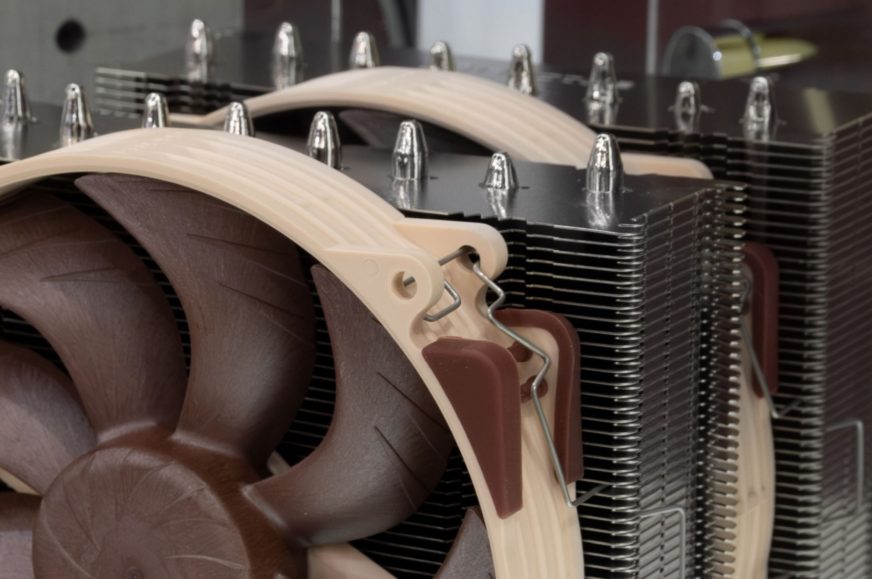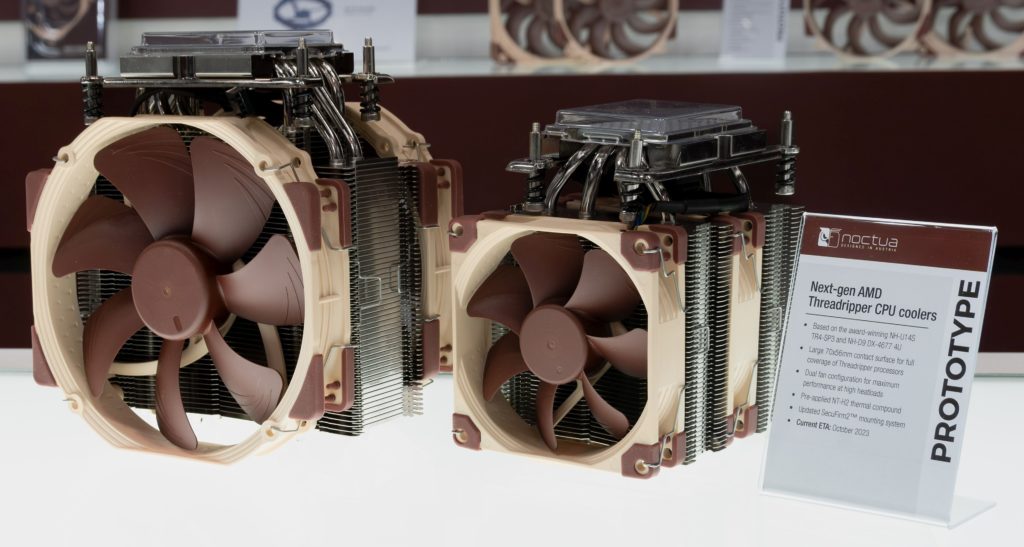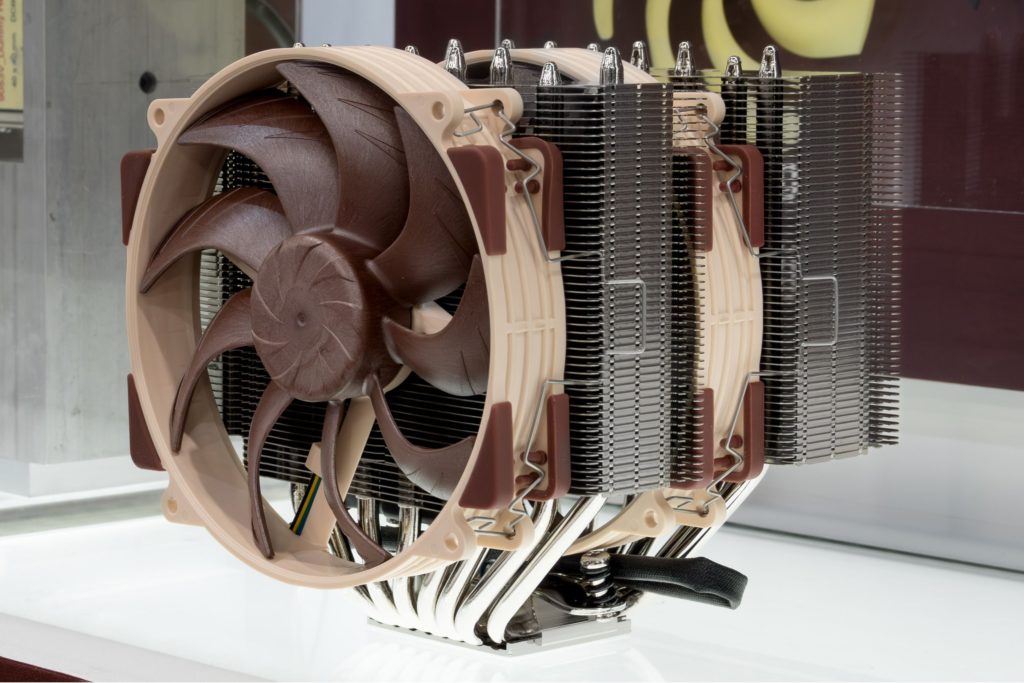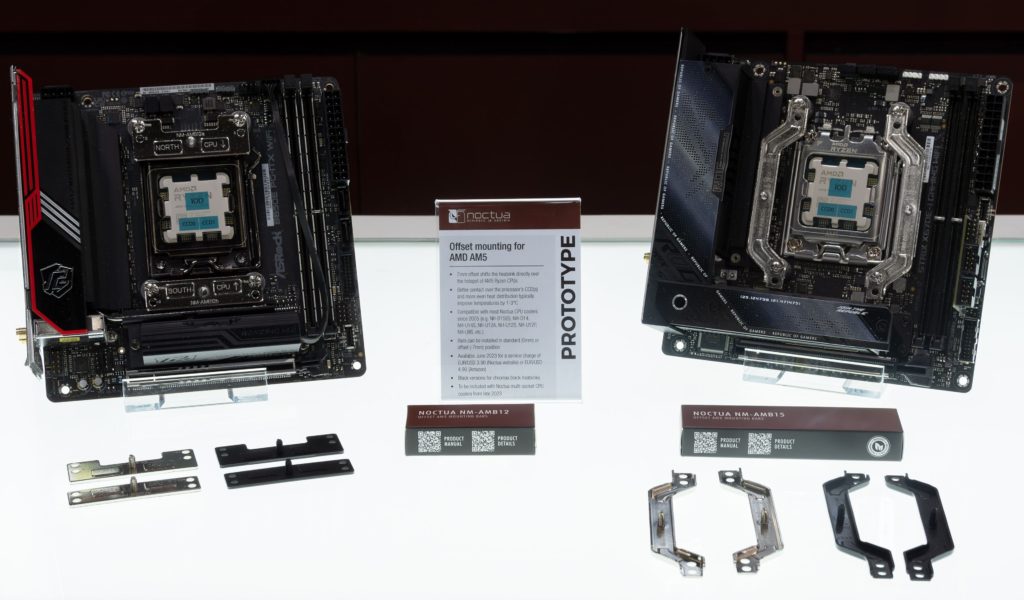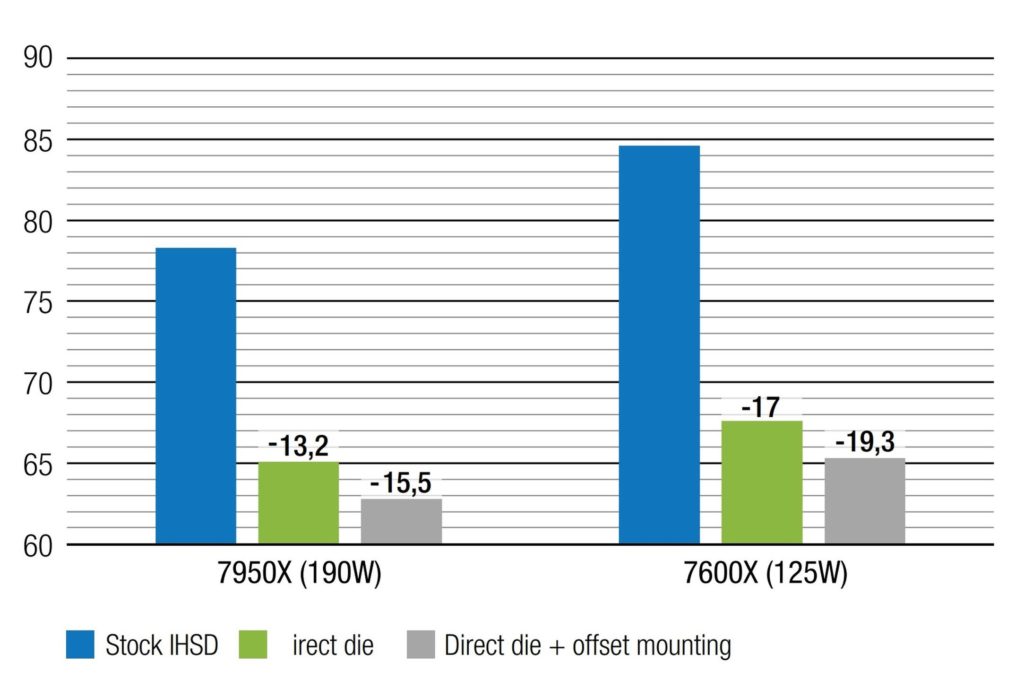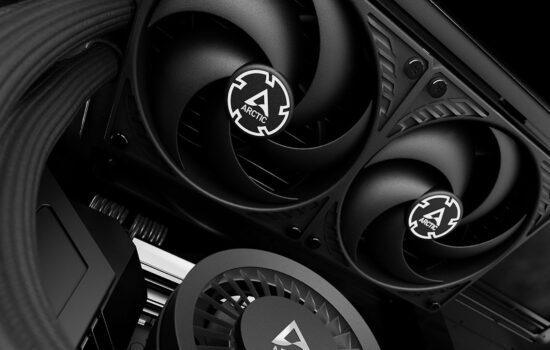Upcoming Noctua coolers and their accessories
Alongside the upcoming generation of 140mm fans, Noctua also showcased a dual-tower cooler at Computex 23 that will outperform (and perhaps later replace) the current top model, the NH-D15. We’ve kind of expected these things as they appeared on roadmaps. The big surprise were the brackets for better cooler contact with atypical chip layout on AMD Ryzen processors.
Three Chromax.black coolers…
We will start our overview with CPU coolers, which are tentatively scheduled for release later this year. Sometime during the fourth quarter, you’ll apparently see black variants of two dual-tower models, a larger one (the NH-D12L with a single 120mm NF-A12x25 PWM chromax.black fan) and a smaller one (the NH-D9L with a 92mm NF-A9 PWM chromax.black fan). Noctua is also preparing the top-flow cooler NH-L9x65 in the chromax.black variant. This one (as well as all the other models mentioned) is only available in beige-brown for now. You can also find the NH-D12L in our tests.
… and two solutions for Threadripper
A wider selection of Noctua coolers is also in the pipeline for owners of high-end AMD sWRX8 and TR(X)4 platforms. The more powerful cooler with two 140mm NF-A15 PWM fans is based on the older NH-U14S TR4-SP3, which comes with only one fan with a slightly lower TDP. The new cooler will be able to achieve the latter at lower fan speeds, which means lower noise, or at higher noise (at comparable speeds) it will allow for slightly higher cooling performance.
Also notable is the smaller NH-D9 DX, which is currently exclusive to the Intel LGA 4677 platform. With the redesigned base, you’ll soon be installing it on Threadripper processors as well. It’s 134mm in height with the fan, which means it’s attractive for 4U format cases that are common in server environments. The accessories of both coolers now include the NT-H2 (instead of the previously supplied NT-H1) thermal paste with higher thermal conductivity. With the NH-U14S TR4-SP3 cooler in the 175–375W CPU range, the impact on cooling performance across these pastes is in the 1–2.8°C range.
Something that beats the iconic NH-D15…
But the biggest mass success will probably be the cooler that surpasses the NH-D15 in the hierarchy. The NH-D15 v2 has a more robust heatsink compared to the current NH-D15. Besides the addition of two heatpipes, the fin surface area has also been increased by 20%. In order to keep the cooler at a reasonable height compatible with cases, the spacing between the fins has been reduced (from 1.9 to 1.6 mm). Compatibility with memory modules has also been solved more elegantly than with the NH-D15. The latter is achieved by offsetting the heatsink. With the current NH-D15 cooler, fins have been shortened and the fan still extends above the DIMM slots.
Another one of the changes is a tighter fit of the middle fan with the towers. The original NH-D15 cooler has a larger gap (as much as 36 mm), which makes it more convenient to install the fan, but it also reduces the airflow through the front tower and specifically at lower fan speeds, the cooling effectiveness drops and you don’t have to go far for “evidence”, well illustrated by comparing the NH-D15 with the NH-D15S (where S “denotes” a variant of the cooler with only one fan). We covered this at the thermal imaging level back in the day. Anyway, Noctua knows about this, shall we say, weak point and has avoided it in the design of the next generation heatsink.The heatsink is acoustically optimized to the 140-millimeter LCP fans we discussed last time.
… and brackets for more efficient cooling
Noctua also shines with the NM-AMB2 (for the rare horizontal cooler orientation) and NM-AMB2 (for vertical mounting) mounting systems, which move the cooler closer to the epicenter where the most intense heating occurs, i.e. the CCD chips with the CPU cores. In contrast to Intel’s CPUs, there are two of these and, more importantly, with lower seating. Therefore, the base is shifted by 7 mm towards them.
The convex surface with higher pressure is thus in locations with higher temperature, which naturally increases the heat dissipation rate due to better contact and thus lowers these temperatures. Noctua’s internal measurements indicate a 1.3–3.1 °C drop in temperature depending on the cooler used, the processor and its power draw. The highest gain is naturally achieved with the most powerful NH-D15 cooler combined with the Ryzen 9 7950X processor (190W) with the highest power draw. By contrast, the changes to the 115-watt Ryzene 7 7700X with the NH-L12S are rather symbolic, with a NSPR (Noctua’s Standardised Performance Rating) of just 88.
And then in cooperation with the youtuber der8bauer (civilian name Roman Hartung) another kit was created (NM-DD1), which allows mounting coolers on the processor with the IHS removed, the contact of the base is directly with the chips. The presented differences (but apparently by Roman, not Noctua) look quite incredible. With the 125W Ryzen 5 7600X, the temperature drop is supposed to be as steep as 17°C, or 19.3°C (with offset). These don’t quite correspond to the direct cooling of the 125W Core i5-7600K CPU, where without the IHS comparable results are achieved to the situation with the IHS and the use of the Thermal Grizzly Conductonaut liquid metal underneath (i.e. between the CPU chip and the IHS) and above it (between the IHS and the cooler’s base).
When the IHS is removed, although there is faster heat transfer in the perpendicular axis above the CPU chip, less heat reaches the outermost heatpipes – this is what the IHS is beneficial for. Similar cooling results with and without IHS are achieved on the Core i5-4670K (Haswell) and we are hard pressed to find technical reasons why this should be fundamentally different with the chiplet-based Ryzen 7000s. Especially in the case of a model that has one chiplet inactive and the other one is already a long way away from some of the heatpipes. It’s also a bit unclear with which cooler such a dramatic improvement is supposed to occur (the most powerful, the NH-D15?). We’ve also sent a question about these things to Noctua, who might be more in the know. If we get clarification on what we’re overlooking, we’ll be happy to edit the comment.
Such a large difference is caused by a combination of an excessively thick IHS and, in particular, a very high heat thermal flow density. This is especially the case with the Ryzen 5 7600X, which is admittedly a lower-power processor compared to the Ryzen 9 7950X, but its load is spread out over a larger area, as it has two active CCD chiplets instead of one (R5 7600X).
The heat concentration per surface area unit is significantly higher than in older Intel processors (Haswell and Kaby Lake), where we did not observe a significant difference without an IHS with direct chip cooling. And they also have a thinner IHS and that also puts the Ryzen 7000 at a disadvantage. The data in the chart above is Noctua’s internal tests using the Noctua NH-D15 cooler (NSPR 183). But very similar results will be achieved with, for example, the NH-U12A single-tower model with NSPR 169 as well.
English translation and edit by Jozef Dudáš





